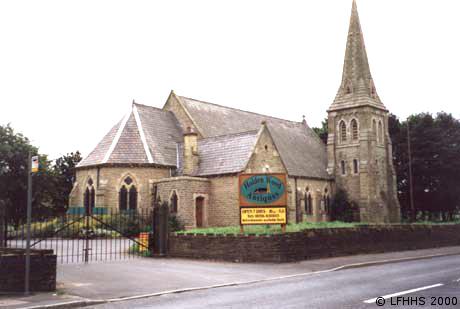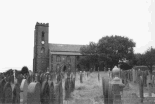
Grane Road, Haslingden
In the mid 1800s Grane village was a thriving community in need of a church as the nearest Anglican church was St James the Great at Haslingden. Land was acquired at Crowtrees to the west of the village and St Stephen's church was completed in 1867. By the time the church was consecrated in 1883 Bury and District Water Board had started to acquire land and property with a view to extending the valley's reservoirs, and over the succeeding decades many of the cottages, farms and mills in the area were either demolished or fell into ruins. As the population left the area the church attendances declined and it struggled to survive. The parishioners decided to move their place of worship nearer to Haslingden and in 1910 a piece of land besides the Holden Arms was acquired from Holden Wood Bleaching Company.
A Mission Room was built on this land and at a cost of £1,800 was opened for services in 1911. The Mission sufficed until the mid 1920s when in May 1925 demolition work was started on the old church, and it was moved stone by stone to a piece of land at the junction of Grane Road and Holcombe Road at Holden Wood. The corner stone was laid by Lord Derby in March 1926 and the new church was consecrated on the 25th of September 1927 by the Bishop of Blackburn. The consecration service also incorporated the dedication of the stained-glass window in memory of the sixteen men of the parish who died in the Great War 1914-1919.
The moving of the church did little to stop attendances dwindling and in 1947 the parish was absorbed into St James' parish and continued so until it finally closed in 1986. The redundant church was put on the market and in 1995 was bought by Mr. John Ainscough, who converted it into the Holdenwood Antique and Heritage Centre.




